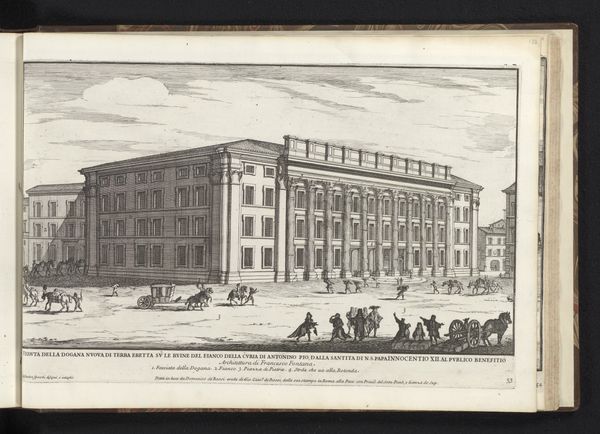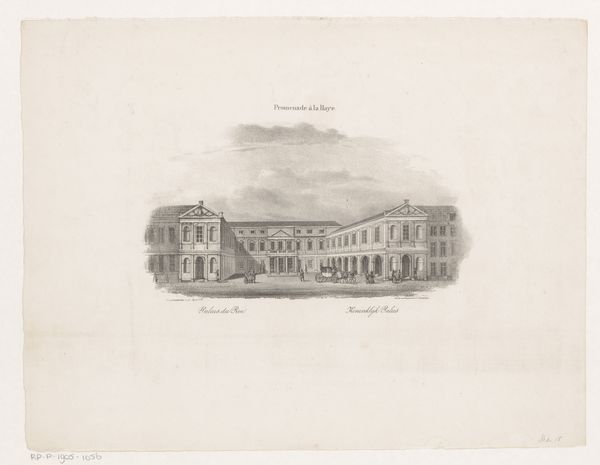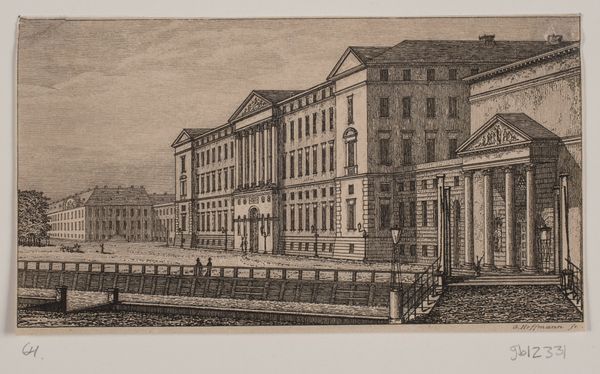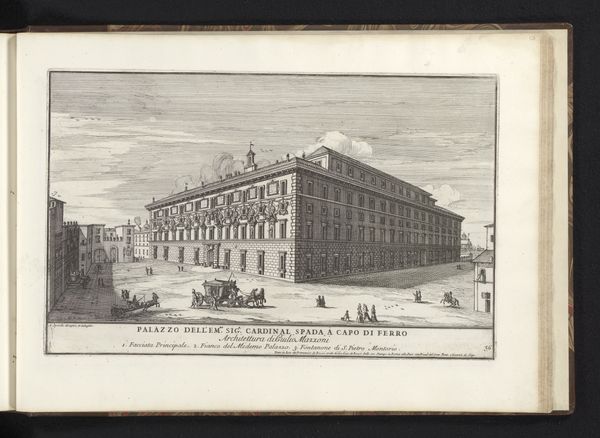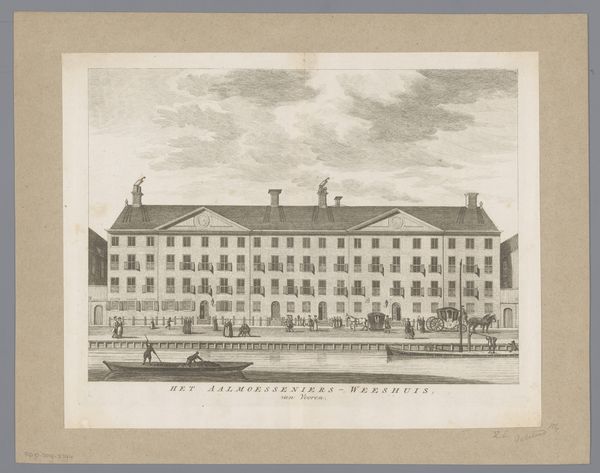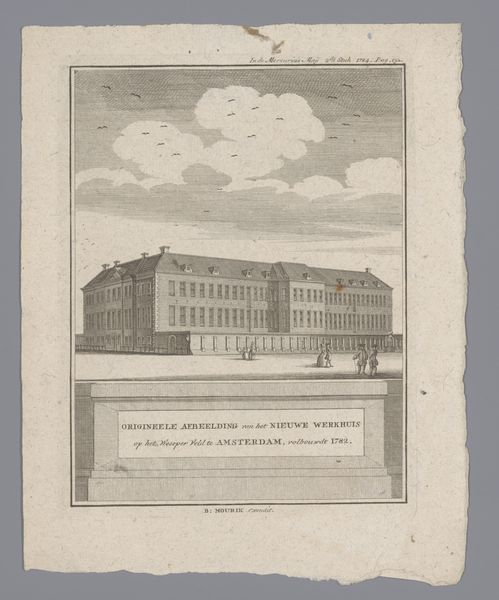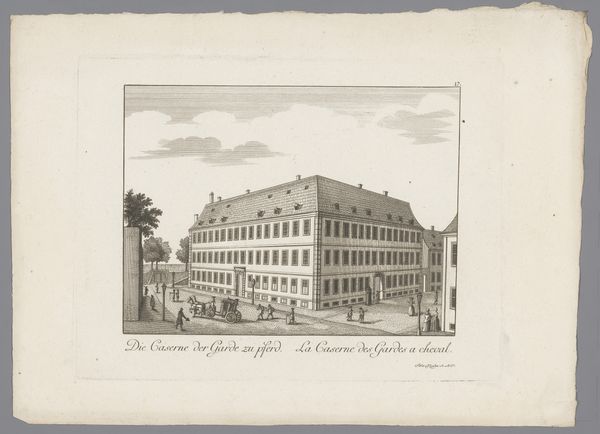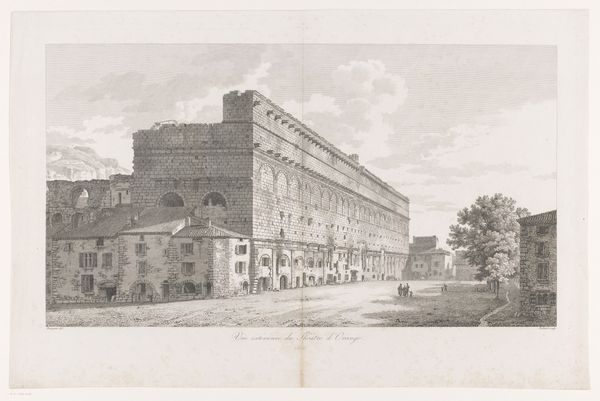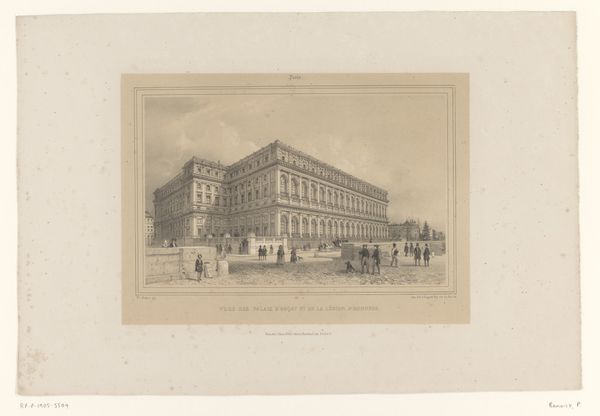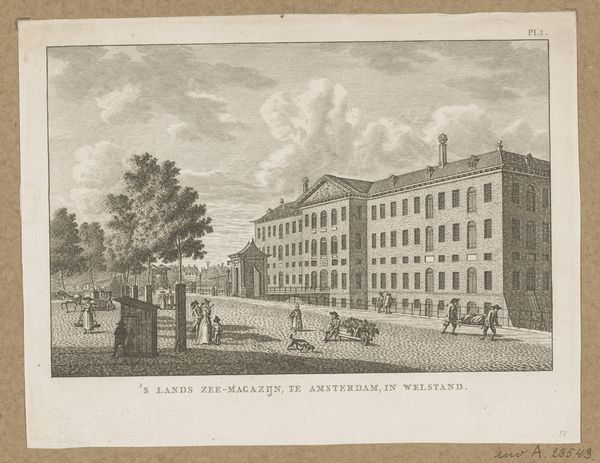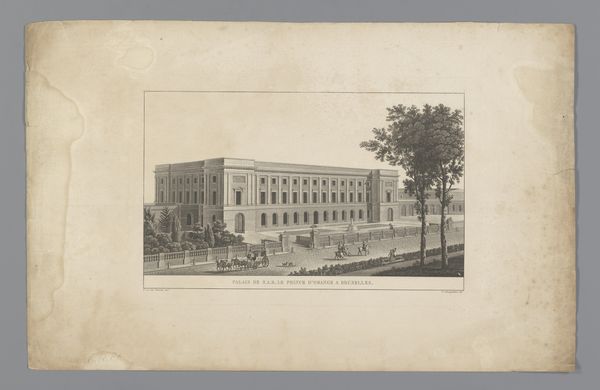
drawing, print, paper, engraving, architecture
#
drawing
#
neoclacissism
# print
#
paper
#
cityscape
#
engraving
#
architecture
Dimensions: height 155 mm, width 233 mm
Copyright: Rijks Museum: Open Domain
Charles Onghena created this print of the ‘Entrepot van de koophandel te Antwerpen’ in 1830. Situated against the backdrop of Belgium's burgeoning independence movement, this image captures a pivotal moment of national and economic identity. The Entrepot, a massive trading warehouse, symbolizes Belgium's aspiration to become a major player in international commerce following its separation from the Netherlands. This warehouse can be viewed as a signifier of both opportunity and exclusion. On the one hand, its construction provided jobs and facilitated trade, yet on the other, it represented a system built on colonial exploitation and the labor of the working class. Onghena's print prompts us to think about how economic progress is often intertwined with complex social and ethical considerations. The building's imposing architecture reflects the era's belief in progress through trade, while simultaneously obscuring the human costs often associated with such development.
Comments
No comments
Be the first to comment and join the conversation on the ultimate creative platform.
